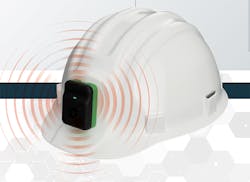Efficient PCB Manufacturing Reaches New Level of Importance in 2020
Printed circuit boards (PCBs) are essential for the proper functionality of the products people use daily, from smartphones to smart speakers. As the COVID-19 pandemic continues, there is an even greater focus on PCB manufacturing.
PCBs Especially Relevant During the Coronavirus Pandemic
Medical researchers don't know how long the COVID-19 pandemic will impact global society. One aspect that's already well-documented, however, concerns how people are more dependent on gadgets with electronic components—or how they may become that way soon.
The laptops people use to work from home contain PCBs, as do the tablets they might depend on to stream content. Internet of Things (IoT) devices contain PCBs, too, and there is a growing market for connected electronics used in new ways to stem the spread of the virus.
Triax Technologies offers an IoT gadget that gives an audible alert if people stand too close to each other. It can also aid in contact tracing by keeping an accurate record of which workers spent time near someone with a confirmed case of COVID-19. Companies are also promoting products that facilitate head counting to help business owners maintain reasonable occupancy levels. PCBs help those devices work, too.
It's also not surprising that the medical industry is particularly reliant on producers maintaining high levels of PCB manufacturing efficiency, too. Products ranging from medical imaging equipment to items that measure vital signs and blood oxygen levels need printed circuit boards to function.
A May 6 news posting from French PCB manufacturer Elvia mentioned how the company committed to assisting a consortium of several major industrial groups that want to produce 10,000 ventilators by the middle of the month. PCBs are crucial components of the machines, and Elvia produced 500 of these parts in four business days. Similarly, Calumet Electronics, based in Michigan, is filling rush orders for PCBs used in ventilators.
The Market Outlook for Printed Circuit Board Manufacturing
The versatility in PCB applications combined with the urgent need to ramp up devices for the COVID-19 fight strongly suggests an abundant growth potential for companies that excel in manufacturing efficiency.
Major Rises in Demand for March 2020
March was the month when many global leaders began to suspect—or see evidence—that COVID-19 would have global ramifications instead of mainly affecting a few countries. The shift started affecting supply chains, causing shortages and delays. In the case of the PCB industry, that sector saw a quick but notable uptick in demand.
Data from IPC—Association Connecting Electronics Industries indicated a 3.7% increase in total North American PCB shipments in March 2020 compared to the previous year. Moreover, PCB bookings climbed 8.7% in March compared to February's numbers.
Shawn DuBravac, IPC's chief economist, also gave a historical perspective by confirming, "March sales and orders are the highest the industry has seen since April 2017 and April 2020 shipments are poised to reach levels not seen since 2006."
The Global Perspective
Research And Markets published a report based on worldwide activity in the PCB market from 2019-2024. It projected total market worth of an estimated $89.7 billion by the end of that timeframe, representing a combined annual growth rate (CAGR) of 4.3% over the period studied.
COVID-19 Causing a Supply Chain Crunch and Other Hardships
The demand for PCBs in medical equipment and other applications does not guarantee that companies in this sector will make it through this current crisis unharmed. For example, Altium, which manufactures PCB software and maintains a marketplace for components, expects a fourth-quarter slump due to the circumstances surrounding COVID-19.
The company's chief executive explained that despite PCB prototype production continuing and the electronics industry faring relatively well so far, their sales numbers would probably slide. He attributed that prediction to the likelihood of small and medium-sized businesses trying to manage cash flow troubles caused by the pandemic.
Another IPC study found 65% of electronics manufacturers expected delays of three weeks on average when sourcing from their suppliers. Moreover, 84% of those polled worried about the pandemic's effects on their business operations.
These findings all show why reducing slowdowns in circuit board manufacturing can put a company in an optimal position to thrive in a challenging landscape and meet customer needs.
How Can PCB Companies Improve Manufacturing Efficiency?
There is no single guaranteed way for companies to increase their PCB manufacturing output reliably. However, investigating the methods for doing so is crucial, especially now that businesses around the world are so dependent on these producers. Here are five viable possibilities for manufacturers to think about implementing:
1. Let Software Automate the Drilling Specifics When Possible
The process of drilling holes into a PCB typically happens via a high-speed computer numerical control (CNC) drilling machine. That tool reaches up to 280,000 revolutions per minute, and the CNC machine may penetrate up to three panels at once.
Researchers discovered they could achieve more accuracy in the drilling process by using software to automate the drill path. The usual procedure is to manually enter coordinates to tell the CNC machine where to penetrate the material. However, results showed that using automated software to detect the proper placement through image analysis reduced unnecessary movement from the drill bit and reduced the overall time spent on the job.
If manufacturers find that manual path placement and drilling become too time-consuming, specialized software may help. However, tweaks may be required over time to maintain high performance.
2. Investigate Additive Manufacturing for Faster PCB Production
Additive manufacturing—commonly referred to as 3D printing—has drastically reshaped production possibilities for items ranging from toys to prosthetic limbs. The 3D printing community is banding together to support production efforts during the coronavirus pandemic. 3D printing can also enhance circuit board manufacturing.
One advantage of 3D printing for this purpose is that it allows a designer to create a circuit to perfectly fit a product's shape rather than making designers deal with the constraints of flat circuit boards. Moreover, a company called Nano Dimension devised capacitors embedded in 3D-printed circuit boards, thereby saving time and space. Such a method eliminates the time normally taken on that aspect of assembly.
3. Pay Attention to the Potential Ramifications of Design Choices
Having an excellent idea that doesn't work out so smoothly in real life could greatly hinder PCB manufacturing output and adversely affect quality. People involved in PCB designs must proceed with caution and understand how certain decisions could have unintended consequences.
For example, once a designer receives the PCB prototype dimensions from a vendor, they can choose the distance between PCB components, as well as the size of the trace. That freedom does not give limitless flexibility, however.
Traces without adequate distance between them could cause issues, as may noise-sensitive signals too close to power supplies. Plus, a hole drilled too large or small could harm surrounding components or suffer from conductivity problems. People involved in design choices must carefully reach conclusions and only after thinking about all possible consequences of a component's placement.
4. Consider Partnering With a Smart Factory for Rapid Prototyping
The path to trouble-free PCB production starts with prototypes. As companies become more dependent on PCBs to weather the circumstances caused by COVID-19, some may require new designs, causing manufacturers to develop prototypes first. Linking with a company that offers rapid prototyping via smart industrial equipment could be a wise choice for maintaining competitiveness.
Tempo Automation has a 42,000-square-foot factory in San Francisco to help its clients get their prototypes faster. The company counts four of the top 10 biggest medical device companies in the world as its customers. Thanks to software automation, the brand fulfills orders for clients in as soon as three days. Plus, Tempo Automation's machines can build up to 15 products per day, and a computerized scanning process checks files for errors before production begins.
PCB manufacturers may find that current onsite resources do not meet client needs. Identifying vulnerabilities and looking for partners to fill those gaps could be the best way forward.
5. Evaluate How Artificial Intelligence Could Supplement Human Knowledge
Artificial intelligence (AI) also offers promise for faster circuit board manufacturing. The technology does not replace human expertise, but it could detect things that they miss due to fatigue, for example. Blending AI with input from people could accelerate processes and reduce mistakes, keeping production levels consistently high.
A company called JITX offers electrical-engineering-as-a-service and relies on AI, plus input from human engineers, to accomplish the job. It provides circuit board designs an average of three times faster and 25% cheaper than people working without such high-tech support. A project falling somewhere between the prototype and production stage might benefit from what JITX offers, particularly if identified issues stump internal engineers and threaten to limit manufacturing progress.
There are plenty of ways to increase manufacturing productivity with AI, too. For example, since artificial intelligence learns by continually analyzing data, it could alert production managers to quality control issues, bottlenecks, and inefficient employee processes, among other obstacles that limit output when not addressed.
Explore New Circuit Board Manufacturing Approaches to Reap the Benefits
Regardless of how a PCB maker expects COVID-19 and whatever else 2020 brings to impact its businesses, putting resources toward better manufacturing efficiency can help the brand remain resilient. The list above is not exhaustive, but it spotlights some possible avenues to consider.
About the Author

Kayla Matthews
Freelance Journalist
Kayla Matthews is an industrial technologies journalist and writer whose work has appeared on American Machinist, Machine Design, Manufaturing.net, and Robotics Business Review, among other publications. To read more from Kayla, please visit her blog, Productivity Bytes.

